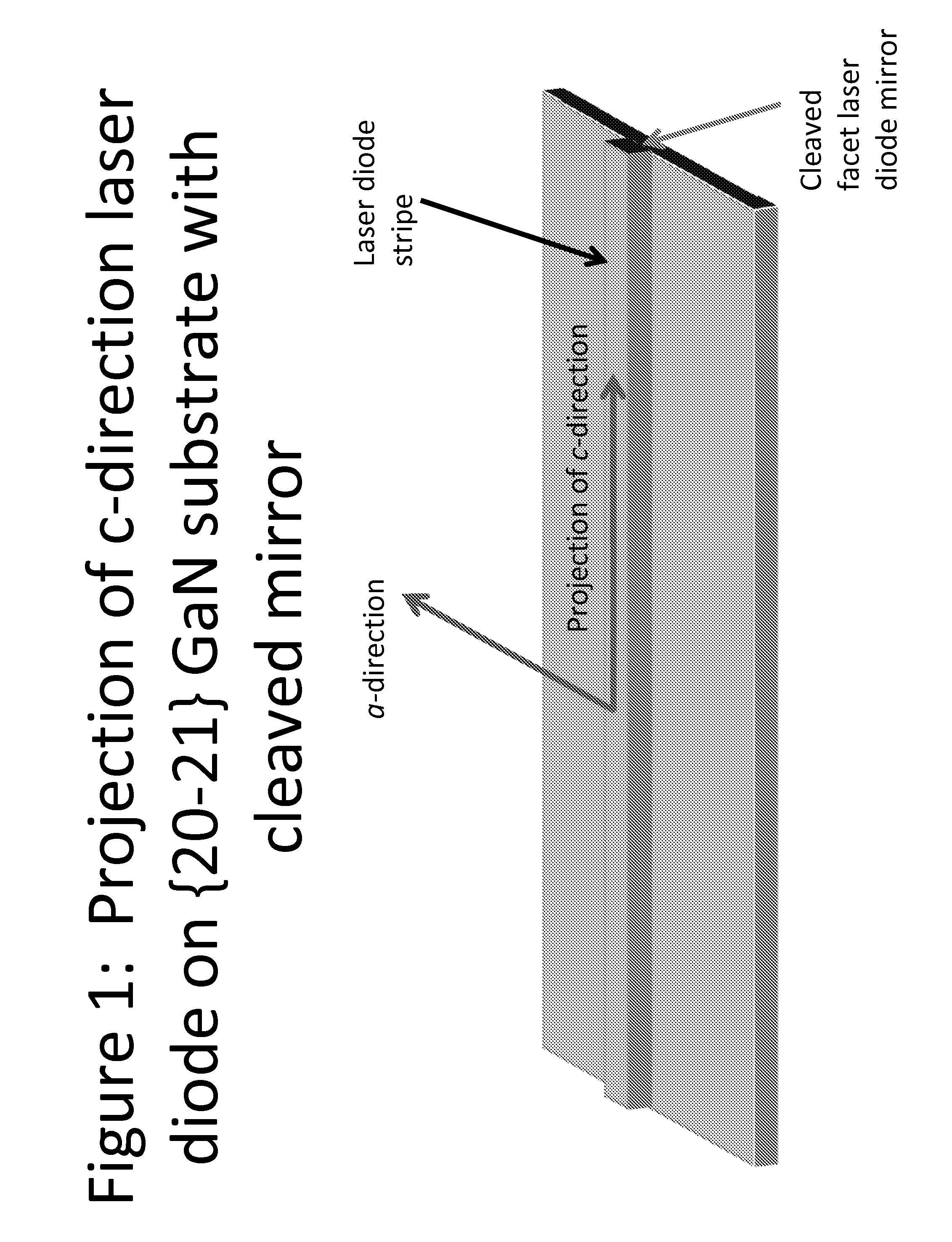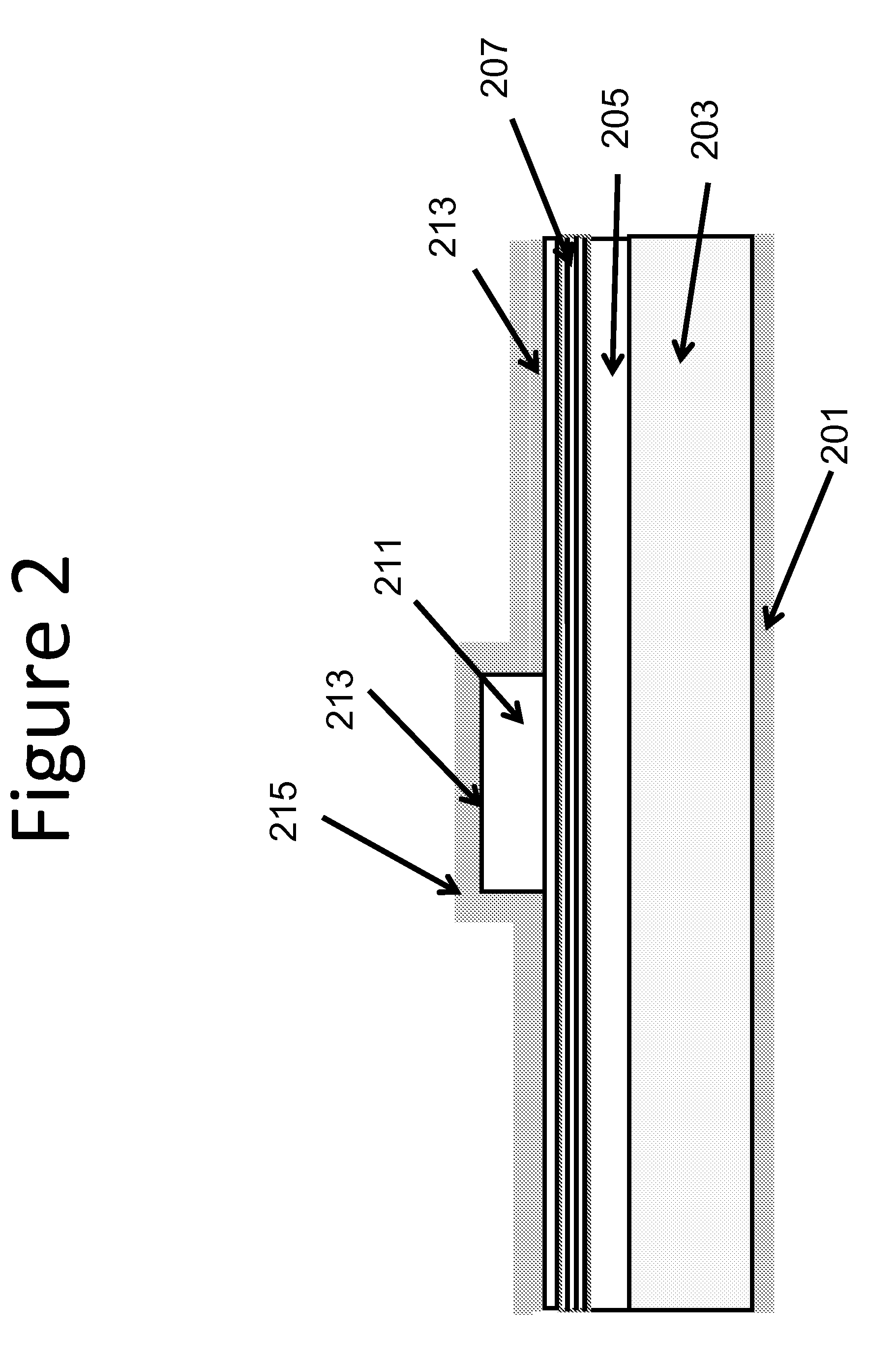Growth structures and method for forming laser diodes on {30-31} or off cut gallium and nitrogen containing substrates
a growth structure and laser diode technology, applied in the field of optical devices, can solve the problems of ineffective illumination, routine failure of the bulb, and inconvenient use, and achieve the effect of improving the cleavage of the laser device structure and cost-effectiveness
- Summary
- Abstract
- Description
- Claims
- Application Information
AI Technical Summary
Benefits of technology
Problems solved by technology
Method used
Image
Examples
Embodiment Construction
[0032]We have explored epitaxial growth and cleave properties on semipolar crystal planes oriented between the nonpolar m-plane and the polar c-plane. In particular, we have grown on the {30-31} and {20-21} families of crystal planes. We have achieved epitaxy structures and cleaves that create a path to efficient laser diodes operating at wavelengths from about 400 nm to green, e.g., 500 nm to 540 nm. These results include bright blue epitaxy in the 450 nm range, bright green epitaxy in the 520 nm range, and smooth naturally occurring cleave planes orthogonal to the projection of the c-direction. It is desirable to align the laser cavities parallel to the projection of the c-direction for maximum gain on this family of crystal planes.
[0033]Although it was believed that a higher gain would be offered in the projection of the c-direction than would be available in the a-direction, it is also desirable to form a high quality cleavage plane orthogonal to a stripe oriented in the project...
PUM
| Property | Measurement | Unit |
|---|---|---|
| length | aaaaa | aaaaa |
| wavelength | aaaaa | aaaaa |
| wavelength | aaaaa | aaaaa |
Abstract
Description
Claims
Application Information
 Login to View More
Login to View More - R&D
- Intellectual Property
- Life Sciences
- Materials
- Tech Scout
- Unparalleled Data Quality
- Higher Quality Content
- 60% Fewer Hallucinations
Browse by: Latest US Patents, China's latest patents, Technical Efficacy Thesaurus, Application Domain, Technology Topic, Popular Technical Reports.
© 2025 PatSnap. All rights reserved.Legal|Privacy policy|Modern Slavery Act Transparency Statement|Sitemap|About US| Contact US: help@patsnap.com



